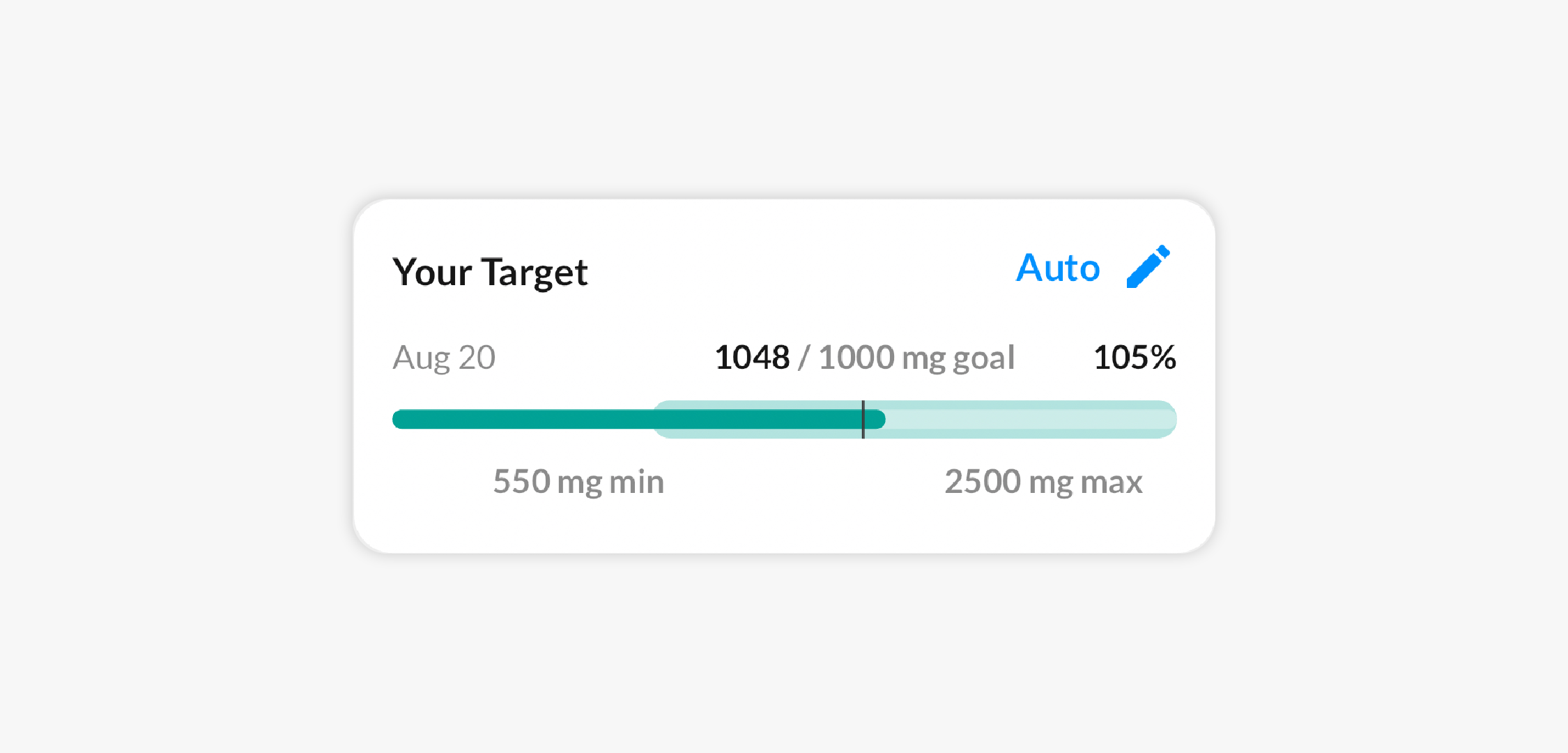At MacrosFirst, we believe nutrition goes beyond just tracking calories and macros. That’s why we’ve created an evidence-based system for automatically setting nutrient targets. These targets help you understand not only how much of each nutrient you need, but also the safe minimum and maximum ranges.

For each nutrient target, MacrosFirst provides up to three values:
Minimum – the lowest recommended daily amount
Goal – the amount you should aim to consume daily
Maximum – the amount you should not exceed daily
Not every nutrient has all three values. For example, caffeine has no minimum or target amount, as there’s no recommended level to consume; however, it does include a maximum to reflect safe upper limits.
We follow a rigorous methodology, consulting both American and European health authorities to provide the most comprehensive and flexible guidance possible.
United States: Dietary Reference Intakes (DRIs), Food and Nutrition Board/Institute of Medicine
Europe: Dietary Reference Values (DRVs), European Food Safety Authority (EFSA)
Minimum Values (Min):
Based on LTI (Lower Threshold Intake), the level below which almost all individuals would be deficient
For nutrients with only Adequate Intake (AI) values, we use 80% of AI as the minimum
Target Values (Goal):
Based on RDA (Recommended Dietary Allowance) or PRI (Population Reference Intake), which are designed to meet the needs for 97-98% of the population
When no RDA/PRI exists, we use Adequate Intake (AI)
Maximum Values (Max):
Based on the UL (Tolerable Upper Intake Level) represents the maximum daily amount most people can consume without risk of negative health effects
For nutrients where UL applies only to synthetic/supplemental forms, we calculate: RDA + Supplemental UL
When the U.S. and EU differ, we choose values that maximize flexibility:
Minimum Values (Min): Lower of the two LTIs
Target Values (Goal): Higher of the two RDAs/PRIs
Maximum Values (Max): Higher of the two ULs
Nutrients with Supplemental ULs
Some nutrients, such as magnesium and folate, have upper limits (ULs) that apply only to synthetic or supplemental forms. In these cases, we calculate the maximum as: Maximum = Goal + Supplemental UL
For example, with folate:
Goal: 400 mcg dietary folate equivalents (DFE), which accounts for the bioavailability of different forms of folate in food
Supplemental UL: 1000 mcg of synthetic folic acid (found in supplements and fortified foods)
Maximum: 1400 mcg
Age and Sex Variations
Our targets adjust for differences in nutrient needs based on:
Age groups: 18–30, 31–50, 51+ years
Sex differences: Particularly important for nutrients like iron and calcium
Life stage: Targets are set for non-pregnant, non-lactating adults
Nutrients Expressed Relative to Macros
Some nutrients are expressed in relation to macronutrient intake rather than as absolute values:
Fiber: As a percentage of total carbohydrates
Amino acids: In milligrams per gram of total protein consumed
Non-Essential Substances
For substances that are not essential nutrients, such as caffeine, alcohol, and trans fats, we provide:
No minimum or target (since they are not required)
Maximum only (to reflect safety guidelines and limit excessive intake)
We don’t set Auto targets for:
Calories, protein, total fat, and carbohydrates: They use our separate macro calculation system.
Net carbohydrates: They are not officially recognized by health authorities.
Total sugars and starch: Authorities focus on food quality rather than specific amounts.
Individual variation: These are population averages. Your needs may differ based on genetics, activity level, health conditions, medications, or dietary patterns (e.g., vegetarian/vegan).
Clinical conditions: If you have specific health conditions, are taking medications, or have been advised by a healthcare provider to follow specific nutrient targets, those recommendations should take precedence over our auto-targets.
Ongoing research: Nutrition science is an evolving field, and we continually update our methodology as new research and guidelines are released.
Our auto nutrient targets provide science-based guidance to help you optimize your nutrition beyond just calories and macros. By consulting both American and European authorities and applying conservative, evidence-based approaches, we aim to give you targets that are both achievable and beneficial for long-term health.
Remember, these targets serve as helpful guidelines rather than rigid rules. Focus on consuming a varied, balanced diet rich in whole foods, and use these targets to identify potential gaps or areas for improvement in your nutrition.
For specific questions about individual nutrients or if you have medical conditions that may affect your nutrient needs, please consult with a qualified healthcare provider or registered dietitian.